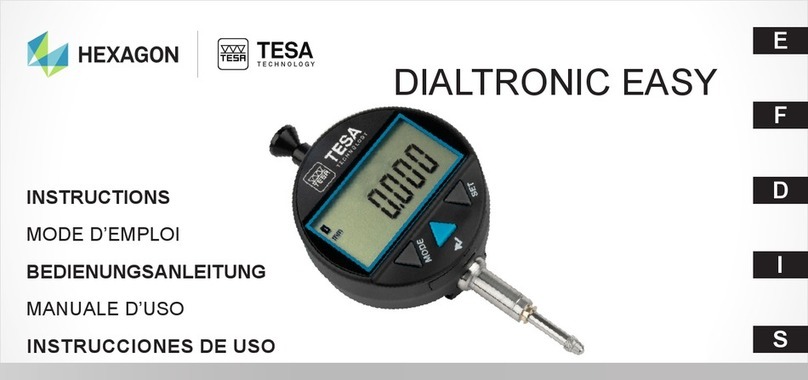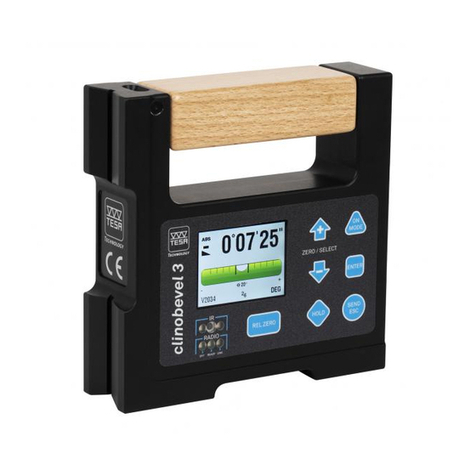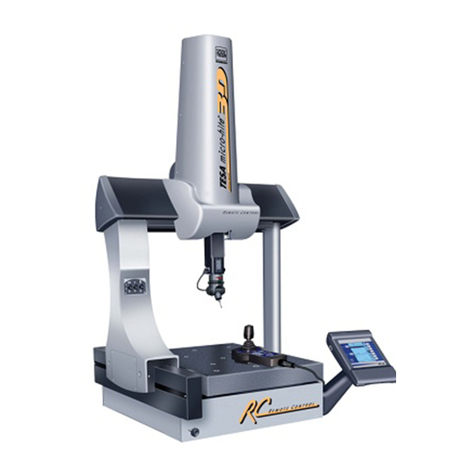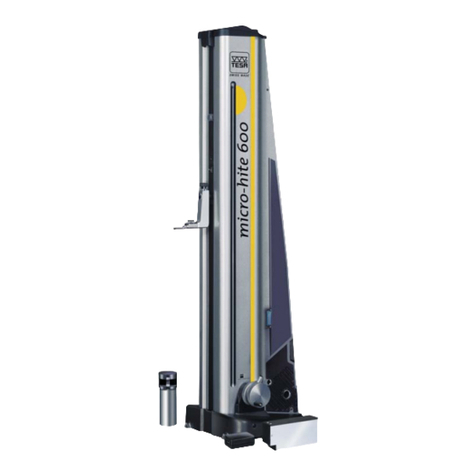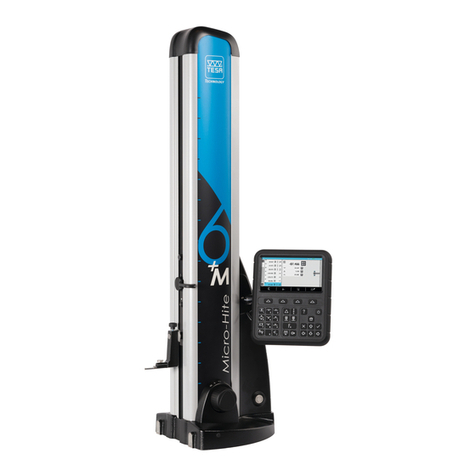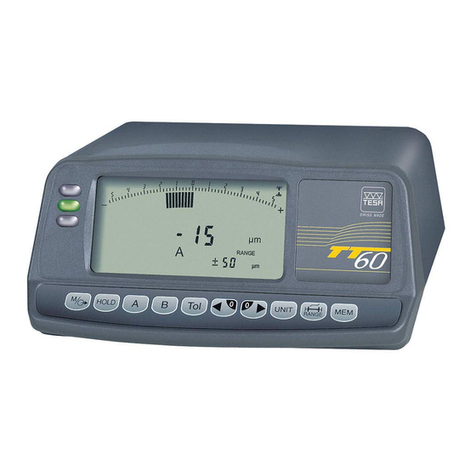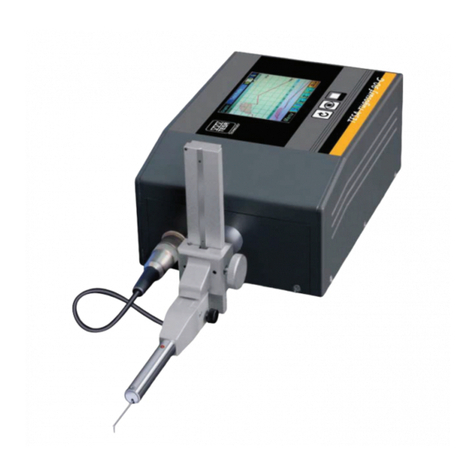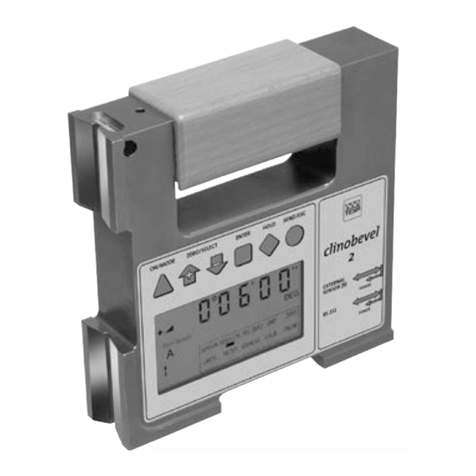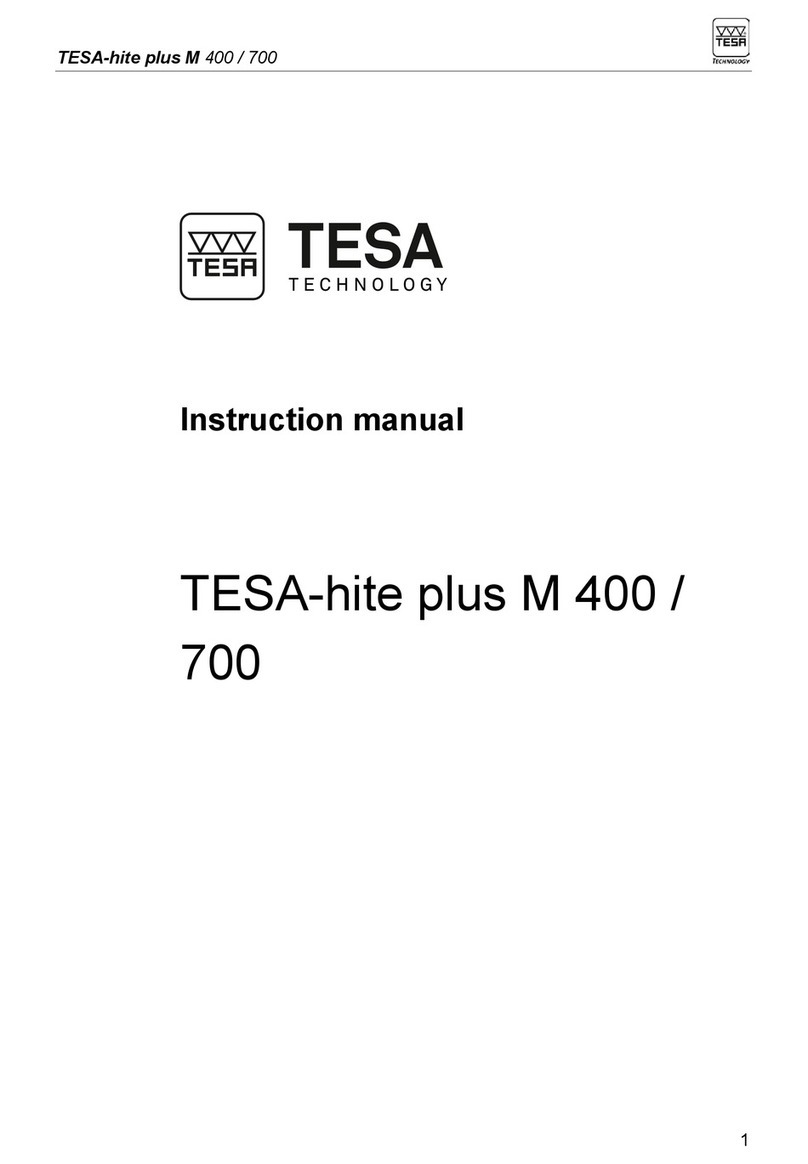TESA-hite 400 / 700
1 MAIN FEATURES
The TESA-Hite 400 / 700 is a mains-independent height gauge, which is suitable for measuring
lengths in the form of external, internal, step, height, depth and distance dimensions. A cast-iron base
with 3 integrated finish-ground supporting lugs ensures the stability of the TESA-Hite 400 700. By
activating the integrated electric pump, an air cushion can be created to facilitate the movement of the
instrument. A rigid column is located under the protective cover, equipped with a guide system that is
absolutely straight and perpendicular to the base. On this slides the measuring head and the
movement of the head is measured by an opto-electronic measuring system (TESA patent). The
measured readings are obtained in a very simple and reliable manner. Firstly the probe is brought into
contact with the point to be measured then immobilised to permit it to stabilise; then, by performing a
further slight rotation of the drive system, the measured reading is automatically recorded by a
dynamic process, with the measuring force at all times remaining constant. An acoustic signal
confirms that the reading has be recorded and it is immediately displayed and, if required, transmitted
via the RS 232 output. Cylindrical surfaces (bores and shafts) can also be measured simply and
reliably by automatically probing to find the culminating point. Although the TESA-Hite 400 / 700 is
manufactured to the highest precision, automatic microprocessor assisted correction makes it even
more accurate: Correction values memorised in the instrument compensate for systematic errors
when measuring lengths.
2 INSTALLATION
2.1 Unpacking and setting up
The TESA-Hite 400/700 is delivered ex factory, packed to protect it from impact and corrosion. Please
use the original packing materials for any subsequent transport.
IMPORTANT:
Your instrument is supplied with a 6V rechargeable battery already inserted. For recharging the
battery, see section 7.2.
Before fitting the standard accessories, release the measuring carriage by unscrewing the light grey
knurled screw (10) Fig. 1 on the hand wheel.
Securely fit the probe 5 to the probe-fixing arm 4 itself fitted to the mounting pin 3. Ensure that the
two knurled screws on the probe-fixing arm are well tightened.
After, unlock the measuring head by moving the slide downward until the insert touché the granite
plate; exert a force on the handwheel, like if you would do a probing down; this will unlock the
transport carriage from the measuring carriage.
However, we recommend you firstly read this instruction manual.
5

